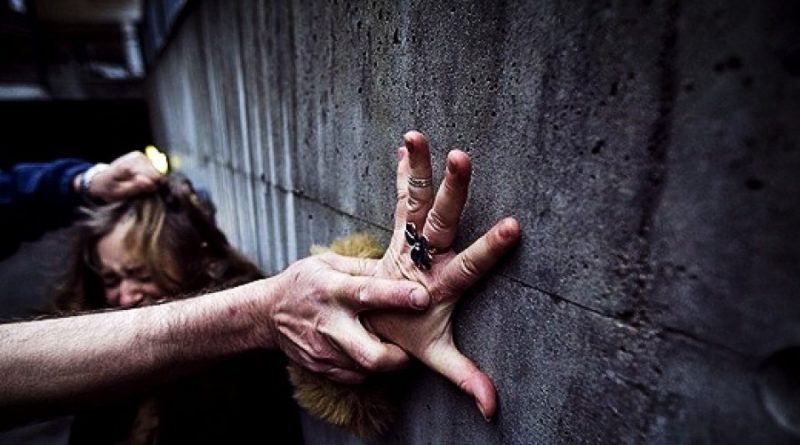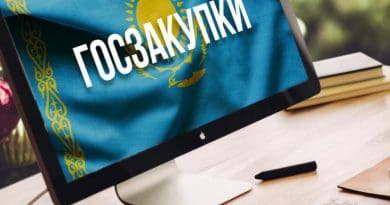In Turkmenistan, women are raped, tortured and killed in colony
A resident of Ashgabat, who spent several years in one of the women’s colonies, in an interview with ACCA on the condition of anonymity, spoke about the problems that women face in places of detention.
– How did your transfer to the colony begin?
– They dropped us off, formed in a row, checked everyone on the list and quarantined us. We were examined by a doctor. All our things were taken from us. We stayed in quarantine for 14 days, although quarantine can continue no more than 10 days.
– What were the conditions in the quarantine chamber?
– There are no beds in the cell, nothing at all. We slept on the concrete floor. Good that it was summer, and the floor was not so cold. Food was brought three times a day: at 6 am, at 12 noon and at 6 pm. There were no spoons. We even ate soup with our fingers, caught vegetables from the soup with bread and drank the broth from a plate. Then they told me that such rules are in all prisons. No food could be left in the cell. It was impossible to sleep during the day. There was not even water to drink. Water was given three times a day for 30 minutes after eating, so it was impossible to wash hands before eating and not to go to the toilet. We had to endure when they give water. We were not allowed to go for a walk, we spent all 14 days in a cell. Several times I managed to go out into the yard to clean the territory. Sometimes girls were taken out for night gatherings with sergeants (optional), given cigarettes, and, after sex, they could take a shower. Some officer called us in turn and suggested we call home to ask our relatives to bring $800 if we did not want to be quarantined. There was one employee of the colony who beat the girls several times. She beat mercilessly, till they bled, mainly in the lower abdomen, and said that she would beat off all of us. Somehow, she formed us in a row and beat everyone with baton. She told us, “Now you are the property of the state, and here you are nonentity.” After 14 days of quarantine, we were taken to the zone, we went to the bathhouse. There we were given towels, a robe (prison clothes). Officers came, and we were settled in barracks.
– How did the conditions in the barrack differ from the quarantine camera?
– They gave me a mattress (without a pillow and a blanket), just one mattress, a bedsheet and a towel. They showed me my place and said that I would sleep on the floor in the aisle between the beds, because the colony was 3-4 times full and there were no places. In the summer, we slept outside, because it was stuffy and hot in the barrack. I got into “a family” from my region. In the colony, everyone lives in “families” of 6-12 people. All are divided equally. Convicts cook, wash, and do the cleaning together. They also punish the whole “family”, or even the entire brigade, because they practice collective punishment for misconduct.
– What do women do in the colony?
– Convicts mainly worked in the industrial zone. If there is a large order, then women work until the lights-out time. If it’s necessary, they work until 2 am, and at 6 am, they get up. Often they forced to work on Sunday. It was very bad and difficult to work in winter. The women were frozen to the bone, and many of them got sick 4-5 times. There was no heating. The administration saves on gas and water. We were told that such an order came from the Ministry of Internal Affairs. In winter, I slept in the kitchen. The first 8 months, I had a hard time. Then, I began to meet with one officer, and almost everything worked out. He gave me a place at his office and helped me with groceries and medicines. In general, he took me under his protection. I often called home, but in another way, it was very difficult. In winter, many get sick due to the fact that the prisoners do not have enough blankets and mattresses, some are forced to order mattresses, cotton blankets, sheets, pillowcases and duvet covers at the industrial area. The administration does not specifically give us what is required by law and does a good business on it. We also do renovation. From the moment the colony was built, there was no repair. We buy paint, cement and all materials ourselves. If you don’t pool money, the officer turns you out of the barrack to the tent. In the spring, we collect money for flowers and seedlings throughout the entire zone. The pump burned out… again, we had to pool money. Prisoners keep the colony at their own expense. In addition, you have to pay for everything, for a meeting with relatives, for medicines, etc.
– Can you tell us the paid services in the colony? And how much do they cost?
– There is absolutely everything paid. Only a punishment cell and a club on the head are free. You can buy a kilogram of minced meat in the dining room for 20 manats ($1 = 3.5 manats). A bucket of potatoes and onions cost 15 manats, one pumpkin – 10 manats, margarine in the dining room costs 20 manats for 1 kg, 5 manats for lepeshka (a round bread). Bathing costs 30-50 manats per person per month. For this amount, you can wash every other day or every day. Who does not pay, bathes once a week and only 15 minutes. For each washing of clothes in the washing machine you need to pay 10 manats. Each of us gave 15 manats per month for the purchase of cleaning things for the toilet.
There are telephone points in the colony. A call (5 minutes) costs 10 manats. A meeting room costs at least 300 manats. If there is no money, you will have to spend a date with your family in the corridor or, in the best case, in a common room, where there are 10-15 families at once. For transfers of more than 30 kg, you need to pay extra, and the price depends on how you negotiate. For the medicines, you need to pay 20-40 manats to the sanitary unit employee, depending on how many medicines you want to bring to the colony. I did not see such a turn of money out of prison as in the colony. This is just some kind of prison business. Each high-ranking officer has his own telephone point and keldym (room). Each telephone point gave to an officer at least 40 000 manats per month. Women prisoners work at these points, and each month they give to the point owner a certain percentage of the revenue. 10-20 people live in keldym, and everyone pays 500 manats. This is the minimum cost of a place. Convicts can also buy a separate keldym. This is a room with a toilet and a kitchen, like a one-room apartment. It costs from 10 000 manats per month. Huge amounts of money are spinning there.
In the colony, there are pass checks 3 times a day, when you need to go to the ground and sit for 2 hours until everyone is counted. But it’s possible not to go to the ground for 200 manats per month, and you will be counted near the barrack. There are those who do not want to go to work in the industrial zone and for this they pay 200 manats per month. The colony has its own shops (also the property of officers or officers protect the owners for money). There, prices are 3-4 times higher than out of prison, and on holidays it’s possible to buy alcohol. For example, vodka costs 400-500 manats per bottle, a pack of cigarettes costs from 50 manats.
– What kind of work did you do in the industrial zone?
– According to the internal regime, we were obliged to work no more than 8 hours a day, and we were forced to work there for 14-16 hours. After doing the norm of 8 o’clock, we worked for the personal pocket of the colony’s administration.
The work is different: convicts comb the wool, clean the cotton to make pea jackets, mattresses, pillows. There is a workshop for the production of carpets, a dyeing workshop, a workshop for the production of keteni (keteni is the Turkmen national embroidery for women’s dresses). We sewed costumes, overalls for the Ministry of Internal Affairs, Ministry of National Security, and the Ministry of Defense. The most difficult is working in a wool processing workshop. In the wool, there is a lot of dust, germs, and women breathe this. There are no protective masks. After 4-5 months of work in this workshop, many women are sick, they cough, their eyes are watering; they constantly don’t have enough air and they begin to gasp, cough up with pus. This is a real hell. No heaters, ventilation doesn’t work. Some women work as cleaners and cooks. There is also a shed where they make bricks.
– What is the salary in the colony?
– It depends on where you work and what kind of work you do. The average salary in the colony is about 200-250 manats. Women are hit a bad patch in their life there if there is no support and help from home.
– And what about a medical care?
– In no way! All services are paid. There are no free medicines and services there. Medicine is completely paid and the prices are several times higher than out of prison. The simplest thing is a syringe that costs 5 manats. Analgin costs 10 manats, a 10-day Ceftriaxone antibiotic treatment costs 700-800 manats, and 5 manats should be paid for one injection. The medical unit mainly makes money by letting medicines into the keldyms. To bring medicine to the colony costs at least 600-700 manats per month.
– Are there tuberculosis patients in the colony? And what are their conditions of stay?
– You know, there are a half of the colony patients with tuberculosis. They have the same conditions as the others. They have a separate tuberculosis barrack, but they turned it completely into keldym. Patients live with healthy people in the same room. There was the order from the Department of Execution of Punishment under the Ministry of Internal Affairs of Turkmenistan that patients in the colony should be no more than 100 people and even less.
– And how did the colony’s administration comply with this order?
– The patients were ordered to get medicines for tuberculosis themselves. Many were brought by their relatives, but the medical unit forbade to pass the medicines to the colony. Patients can buy anti-TB drugs from the medical staff, but the prices are several times higher than out of prison. Those, who expressed their indignation, were severely beaten and sent to punishment cell. Also, they were forbidden visits and parcels from relatives for 3 months.
– What medical staff works in the medical unit?
– Some doctors are brought from the city. In extreme cases, the patient is taken in handcuffs and under guard to the city hospital. The pregnant women are taken to a maternity hospital in handcuffs too. Although there is a special barrack for women with children in the colony. They can also give birth in the colony, but the administration does not uncover the equipment, they are afraid to break something. This equipment is shown only to inspection commissions. If covers are removed from the devices, then there will be a commission.
– What checks and procedures are carried out by medical personnel in the colony?
– Once a year they do fluorography of the lungs, and fill out health cards without examinations, and write that the entire colony is practically healthy. The head of the medical service came and ordered not to spoil her statistics for the report. Doctors also replace lung pictures. A picture of a healthy person is placed in the patient’s card, and then the patients are treated themselves and they are no longer given extra products; milk, an additional portion of butter and around 5-10 eggs per month. Sick women are content with it. Sometimes diapers are given to parturient women, but this is very rare. We gave them the products that our relatives sent us from home. Children are taken away from women after 1 year and given to the prisoner’s relatives or sent to orphanages. One woman told me that she was handcuffed to a chair during childbirth, and then she was transferred to a ward under escort and handcuffed to a bed. She went to the toilet under escort, and the guard was waiting near the door. She was beaten with a baton after giving birth, it was in the colony. She was late for check and was bruised for a month. In general, this is a real concentration camp. Even in the colony, there are many patients with hepatitis, there are also HIV patients, but no one helps them, many die.
– Can you name the approximate number of deaths for the entire period while you were in the colony?
– I can’t say for the entire period, but in the last year that I sat there, at least 30 women died. All the dead are written in documents that they have died from incurable diseases: diabetes, congenital heart disease, cirrhosis, etc.
– What are the prisoners fed in the dining room? What variety of products?
– Variety? Where have you been all this time? In the morning, they give bread and semisweet tea for breakfast. Recently camel spike is used instead of tea. Tea is sold to the prisoners. A cup of tea costs 5 manats. For lunch, they give soup, if you can call it that. Sometimes there is sprat in tomato sauce, pilaf twice a week. It is cooked in raw cottonseed oil. Often they give pumpkin soup without salt, oil and onions, just boiled pumpkin and some potatoes. They don’t give spoons in the dining room. Even soup, women eat with their fingers. Can you imagine this picture? For dinner they give the same food as for lunch, but in the dining room you can buy any products and minced meat too. There is always sugar for sale.
– How often are women tortured?
– The detention of women in such conditions is torture. On violations, officers do a good business. For the slightest offense, women face a punishment cell for 10 days and 5 days additionally, or they have to pay. Almost everyone is beaten with clubs between legs. It is difficult for those who dare to go against the administration of the colony, refuse to work in the industrial zone, or contradict officers. They are especially punished for brawls. When I was in the punishment cell, there was one woman screaming hard, she was beaten with clubs. They tied her hands and hung on the wall… she screamed for two hours. After the punishment cell, we met with her in the medical unit, talked, and when the doctor left the office, she showed me her breasts without nipples. I felt so bad, I almost passed out there. I walked to the barrack, and tears flowed from my eyes. I didn’t even understand how I got to the barrack. It turns out that she was hung up and her nipples were pinched by aluminum clothespins. I told this to my older neighbor. She showed me her breasts, and… without nipples too. The eldest told me that in the colony at least two out of a hundred women are without one or two nipples. For a week I could not recover from what I saw and heard. Sometimes riot police come from Ashgabat, and then they beat everyone in a row, especially for intimidation. And what they do in a punishment cell is hard to talk about …
– You don’t want to tell?
– They rape the girls there, beat them, shove batons between the legs of women. After this, one woman was taken to the hospital to sew the colporrhexis. Damn them all!
– Tell me please, were there any deaths after torture and beatings in the women’s colony?
– Of course, there were, but these cases are immediately trying to hide and the officers spread rumors around the zone. One says that woman died, the other points to another woman and it turns out that as many women died as the colony staff. They specifically do this so that we don’t know who actually died and how many women died.




